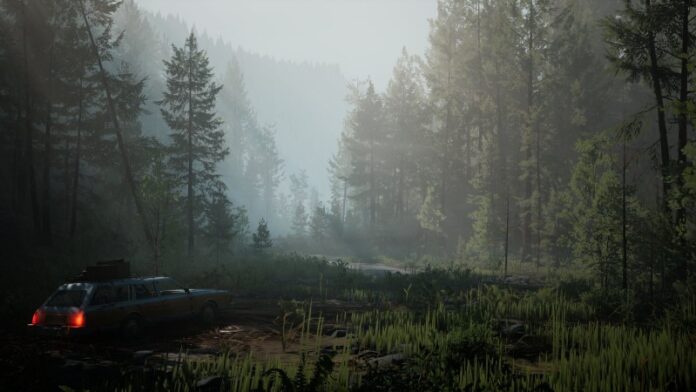The reveal of Pacific Drive last year immediately grabbed me. I liked what I saw in the initial trailer, sure, but what I found especially intriguing was that most of the game happens through a first-person view of someone driving an old station wagon through a beautiful but distraught Pacific Northwest forest. Rarely do driving games force a first-person view, and even fewer deviate from being a racer.
Pacific Drive does both, and after viewing roughly 30 minutes of gameplay during a virtual preview, I’m even more intrigued. In a way, Pacific Drive is a racing game, but you’re not racing against other players – you’re racing against a biome ravaged by a mysterious sci-fi force that controls anomalies set on ending your run.
After filling up the station wagon with gas, repairing its doors, and preparing the beater for a drive, the Ironwood Studios developer planned their next procedurally generated trek through the forest, one of the various biomes in the game. They charted the zone, picked a node, which acts as a spot on the map you can start a run from, and were off on their next drive. The mysterious sci-fi force attacking the player during this drive makes the forest feel alive. Non-human mechanical anomalies like abductors use a magnet to drag your car around. Crawlers create electric fences in front of you, and dust bunnies use spikes to bring your vehicle to a halt. Even the ground erupts with pillars of stone to stop you, and falling trees do the same. All of this can damage the car, and you’ll need to repair it using a blow torch, other tools, and resources you must scavenge by exiting the vehicle.
Ironwood remained secretive about the ultimate objective of Pacific Drive, but in this preview, the developer playing gathered resources to strengthen the car so they could progress further through the exclusion zone they needed to escape from. Your drives, which could last as quickly as a few minutes if you’re not careful or as long as half an hour or more, are time trials. Stay too long, and a battle royale-esque storm begins to close in on you, urging you to escape through the large red light that acts as a beacon. If you succeed, you’ll be transported back to the safety of your garage. Fail, and you lose a chunk of the resources you collected.
I don’t typically enjoy driving in first-person; the typical third-person view that hovers behind a car allows me to see more and have greater control of the vehicle. But Pacific Drive seems to have slowed down the driving pace to let players more easily maneuver a station wagon going through sci-fi hell, and I appreciate that.
Ironwood emphasized the relationship it wants players to build with the vehicle, describing it as symbiotic. This is why your car will remain the station wagon throughout the game. You can upgrade it in various ways, both mechanically and aesthetically (you can’t pet the vehicle but can pat the bobblehead in it), but that’s the extent of differences between your car and mine.
More than anything else, Pacific Drive is a survival game, complete with the usual robust crafting systems. You can craft on the go or use special machines in the garage that give higher yields. Resources strengthen your vehicle, which allows it to go further and for the collect-upgrade loop to reset in a new way and continue again.
Having not played it, I’m not entirely sold on the experience. I want to know how it feels to do what I’ll be doing most of the game: driving. But if this preview was just a taste of the game’s world and systems, which feel inspired and new in the driving genre, Pacific Drive is a trip I’m excited to begin.
www.gameinformer.com







